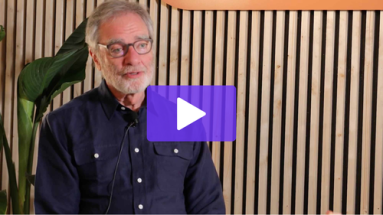
There has never been a more dynamic and challenging time to be a marketer. Since the advent of the internet, fueled by available high-speed access and ignited by the proliferation of powerful new devices, marketers have more access to consumers than ever before. We’re awash in data and should be living in a nirvana of actionable insights.
The reality, however, seems disconnected from this promise. Over the last 18 months, some of the largest and most influential advertisers in the world have spoken up about their concerns with digital advertising, calling the supply chain “broken” and pointing to high incidence of fraud and lack of brand safety. Subscription video on demand (SVOD) services are affecting the reach of traditional marketing mediums like TV and radio. The launch of GDPR in the European Union and related privacy challenges have added complexity to the collection and management of consumer data. Combine these with changing consumer preferences and zero-based budgeting and it’s clear that the job of the CMO has become a more delicate and dangerous catwalk.
The Nielsen CMO Report 2018, the first of an annual series of CMO reports with a focus on global brand advertising, taught me a lot about how brand advertisers are navigating today’s marketing environment. The report makes it clear that we are in the midst of a slow but inevitable change—an evolution, not a revolution. Marketers in the U.S. are leaning into the data, tools and capabilities available today. And while they don’t always deliver as hoped, their willingness to invest and experiment—while incorporating the tried and true—continues.
When asked to rank the perceived importance and effectiveness of digital media channels, marketers placed search and social channels at the top of the list. Television continues to hold its own as the highest ranked traditional media channel across perceived importance and effectiveness measures. That said, radio continues to lead all channels in terms of weekly reach in the U.S., and a full 45% of respondents thought radio to be an effective channel.
Digital ad spend has eclipsed traditional channels, and we expect that to continue. When forecasting their spend in the next 12 months, 82% of respondents expect to increase their digital media spend as a percentage of their total advertising budget. By comparison, only 30% of respondents plan to invest more in traditional media channels in the near term.
CMOs also reflected on a critical piece of the marketing mix, trade spend (e.g., in-store discounts, coupons, special offers, etc.). They voiced a desire for a unified approach to trade and media strategy in order to correctly allocate spend ratios. That said, there was no unanimity in planned trade investment going forward: 44% of respondents expect no change over the next 12 months, while 34% say they will increase and 22% say they will decrease their investment in trade promotions.
In terms of outcomes measurement, only one in four marketers reported high levels of confidence in their ability to measure the ROI of their media spend (digital and traditional) or their trade spend. Not surprisingly, 79% expect to increase their investment in marketing analytics and attribution in the next 12 months.
Marketers reported being most concerned with improving media efficiency by limiting advertising waste across the digital ecosystem. The top three capabilities they chose to make this happen were: reach and frequency measurement (82% rated it the most important capability); ad viewability (73%); and data management platforms (62%).
There is good news here for media agencies, as 43% of respondents reported plans to increase spending with their agencies over the next 12 months. This is likely due to their confidence in the agencies’ ability to deliver a strong return on investment, as reported by 84% of respondents.
Finally, the report illustrates some of the progress that marketers have made around omnichannel marketing, which we define as being media agnostic and oriented around customer needs. Respondents reported improvements in aligning their media channel strategy with their primary campaign objectives. The most highly rated campaign objective was customer acquisition, which was associated with mid- and low-funnel strategies that favored digital media channels like search. In second-place was brand building, which was associated with top-funnel strategies, which favored traditional media channels like TV and radio.
Marketers and their agencies are clearly adapting to changing consumer media habits by taking a more strategic approach to their marketing mix, but challenges remain organizationally, technologically and in regards to consistent ROI measurement.
As one marketer said, “the industry trend is definitely moving quickly and irreversibly towards social media, digital, and personalization with an absolute requirement for data and analytics to understand the impact of money spent on media.”
For additional insights, download the Nielsen CMO Report 2018.
This article was originally published on the GreenBook blog.



